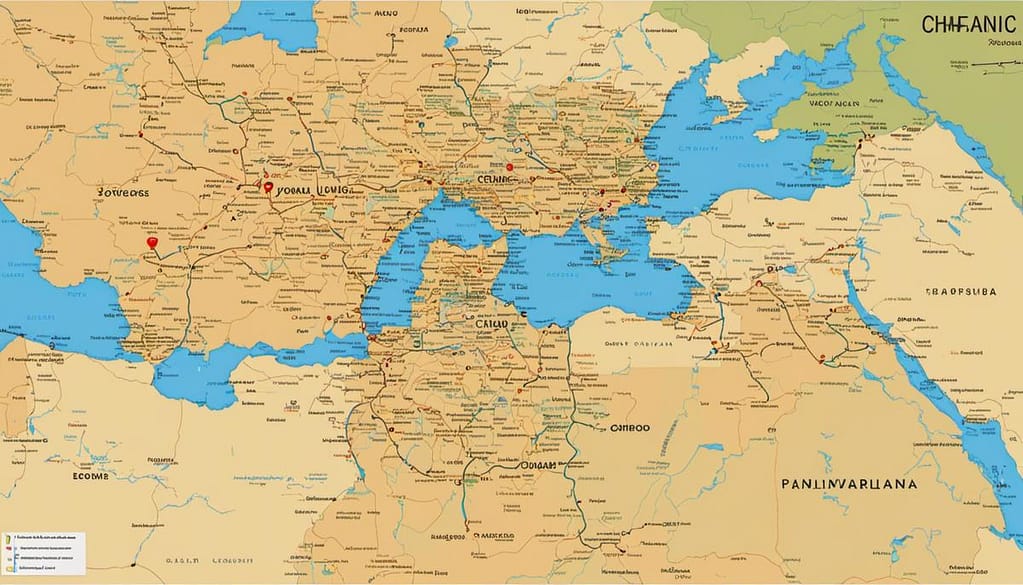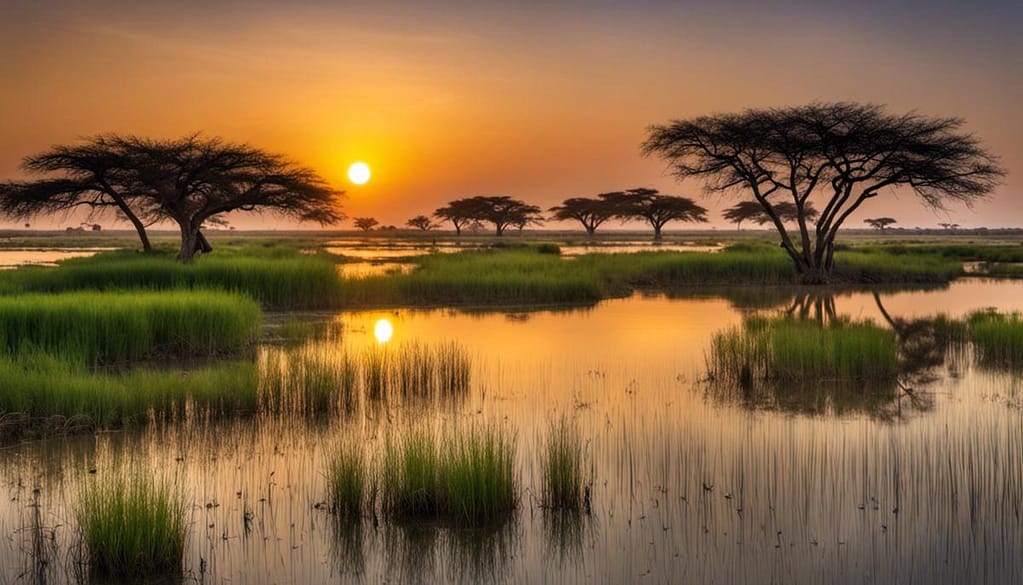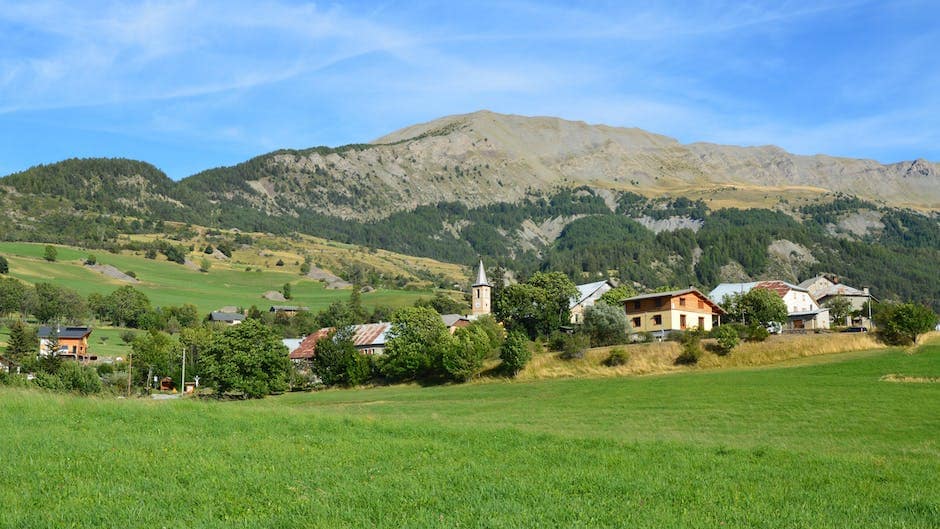Immersed in the heart of Africa, Chad promises an unyielding blend of vibrant cultures, staggering natural beauty, and rewarding travel experiences. This comprehensive Chad Travel Guide serves to help aspiring globetrotters navigate every facet of their Chadian journey, from setting foot in the country, understanding its geography and climate, to immersing in its rich culture and language. The focus then shifts to exploring the major cities and their unique attractions, maintaining health and safety, and essential aspects of accommodation and transportation. So, whether it’s savouring the rhythmic musings of traditional music, embracing the wild allure of Zakouma National Park, or simply mingling with locals in bustling city markets, Chad opens a chapter filled with diverse narratives.
Getting to Chad and Visa details
Getting to Chad
Chad, a country in North Africa that is home to a plethora of historical sites and natural beauty, is accessible via numerous routes. The most common way of entering the country is through N’Djamena International Airport, located in the capital city of N’Djamena. This airport serves as a hub for international airlines from several countries, including France, Ethiopia, Sudan, and Turkey. However, travellers can also reach Chad by road through Cameroon, Libya, Niger, or Sudan. These routes offer an overland experience through the varied landscapes that Chad has to offer.
Rail travel is not a common means of getting to Chad as the country lacks a public train service. However, there is a freight train that runs from the port city of Douala in Cameroon, but this is mainly used for cargo. Alternatively, those seeking a slightly more adventurous route may opt for river transit via the Chari River from Cameroon or by Lake Chad shared by Chad, Cameroon, Niger, and Nigeria.
Search for Last Minute Flight Deals to Chad!
Visa Details
Visa requirements for Chad vary depending on the nationality of the visitor. Nationals of any country except Algeria, Benin, Burkina Faso, Cameroon, Central African Republic, Congo, Côte d’Ivoire, Gabon, Guinea, Mali, Mauritania, Niger, Nigeria, Senegal, and Togo, requires a visa to enter Chad.
The process of applying for a tourist visa generally includes an application form, passport-size photographs, a return or onward-ticket, a letter of invitation or hotel reservation, and payment of the visa fee. It’s crucial to be aware that applications must be made in person at a Chadian embassy or consulate, but services and processing times can vary. The visa processing time typically ranges from one to ten working days, depending on the type of service requested: normal or express.
It’s also important to note that even if you have a visa, entry into Chad is not guaranteed. The final decision rests with the immigration officer at the point of entry. For stays of more than seven days, you must register at the National Police’s Immigration Office in N’Djamena within three days upon arrival.
In terms of costs, visa fees can vary greatly depending on nationality and the length and purpose of the visit. Thus, travellers are advised to confirm the current visa fees with the nearest Chadian embassy or consulate prior to their travel to Chad.
Lastly, all visitors to Chad need to carry proof of yellow fever vaccination. The latest health advice should be consulted ahead of the trip as other vaccinations may be required as well.
Navigating the Fascinating Country of Chad
Venturing beyond the borders of Chad presents an array of wondrous sites fuelled by its diverse cultures, distinctive topography, and enriching experiences that appeal to both transient visitors and long-term descendants. Undeniably, this bewitching African nation has a multitude of adventures in store for every roving explorer.

RELATED BLOG:
- Complete Guide to Exploring Eswatini – An Untouched African Paradise
- African Countries Offering Digital Nomad Visa in 2023
- Unveiling Ethiopia: Your Ultimate Travel Guide
- Practical Travel Guide: Exploring Burkina Faso
- Unveiling Algeria: A Comprehensive Travel Guide
Geography and Climate
Experiencing Chad’s Staggering Geographic Diversity
In the heart of Africa, the national boundaries of Chad encapsulate a rich geographical tapestry. Directly mirroring Africa’s own geographical diversity, Chad spectacularly emulates this through its own varied topography – from desolate deserts to verdant savannahs, providing a remarkably accurate microcosm of the continent itself.
The harsh aridity of the Sahara Desert characterizes Chad’s northern region, swathed in a warm sepia hue. Days in this region see temperatures soaring to extreme heights, the sprawling sand dunes seemingly extending to infinity, their golden allure further intensified by the relentless sun, leaving the region in an eternally arid state.
Providing a captivating contrast to the stark Sahara is the verdant and wetland rich south of Chad. Its savannahs and marshlands fluctuate with the seasons, transitioning from lush green displays of life to a vibrant tapestry of russet and ochre hues. Serpentine rivers and tranquil lakes wend their way through, providing a unique haven for a stunning array of species and contributing to Chad’s remarkable biodiversity.
Embracing the Seasons in Chad
The remarkable transition in Chad’s seasons introduces a dynamic blend of climates, significantly influencing the landscape and its biodiversity. The dry season, from October to April, ushers in the ‘Harmattan’ – a cooling breeze from the north-east that results in dry, dusty conditions and a temperate climate. During these months, Sahara’s unforgiving nature slightly softens, making exploration less challenging.
Between May and early October, Chad’s usual dry terrains morph into green marshlands and full lakes, as the rainy season takes hold. Particularly in the south, the savannahs and marshlands bloom, and wildlife thrives, presenting an entirely different aspect of the country.
The ideal time to visit Chad depends on one’s preferences. For those adventurously inclined towards Sahara exploration, the colder months from November to February would be most agreeable. Wildlife enthusiasts would find the duration following the rainy season – late October to early December – to be most rewarding, as the climate is relatively favourable, and migratory birds enhance the already blossoming scenery.
When travelling to Chad, it is crucial to prepare for drastic weather changes, including intense heat during the day and cooler temperatures at night. Having an umbrella or rain gear during the rainy season could prove useful.
It is crucial to remember that Chad is a territory of contrasts, encompassing the harsh Sahara in the north and the lush savannahs and marshlands in the south. Visiting this country provides unique opportunities to witness how different seasons elicit such striking climatic extremes.

Culture and Language
Exploring Chad’s Cultural Mosaic
Despite being landlocked, Chad’s diverse culture is far from insular, given that over 200 distinct ethnic groups coalesce here, each enriching this African country’s unique cultural fabric. These ethnicities introduced their distinctive music, dance forms, festivals, and culinary practices, all of which collectively vivify Chad’s culture. While musical traditions and instruments vary from one ethnic group to another, drums and flutes are common to most, reflecting a shared musical heritage. Engaging in traditional dances, each ethnic group displays an array of movements and costumes that are usually showcased during festivities and ceremonies, further enriching Chad’s cultural panorama.
Festivals and Celebrations
Festivals in Chad are diverse, reflecting the country’s multiethnic makeup. Most of the celebrations are deeply associated with the agricultural cycle or religious beliefs. Some of the most popular festivals include the Gerewol Festival, known for its colourful male beauty contest among the Wodaabe Fula, and the Cure Salée, a festival celebrating the end of the rainy season. The Gaoui Festival and Chad National Day on 11th August are also significant annual festivities featuring traditional music, dances, and food. More recently, International Jazz Day has also been acknowledged with an annual festival in the capital, N’Djamena, promoting both local and international music.
Cuisine of Chad
Chadian cuisine varies greatly by region and ethnic group but commonly features staples such as grains, meat, fish, and vegetables. The staple dish is millet, typically prepared as a porridge and served with sauces made from okra, tomatoes, spinach or peanuts. A popular street food is ‘lahoh,’ a pancake-like bread usually served with honey or a savoury topping. Meat, particularly mutton, goat and camel, is highly favoured but is often reserved for special occasions due to its cost.
Management of Linguistic Diversity
Chad is a fascinating study in linguistic diversity with more than 120 languages and dialects spoken throughout the country. The official languages are French and Arabic, with French used mainly in administrative and educational contexts, and Arabic prevalent in commerce and communication. The government, recognising the linguistic wealth of the nation, encourages education in mother languages to reflect the multilingual reality of Chadian life.
Despite this linguistic diversity, travelling in Chad with knowledge of French or Arabic will substantially help personal navigation and understanding. Chad possesses a good education system, and those in urban centres, particularly younger or professional individuals, often speak good French or even some English.
Here are a few basic phrases in French that might be useful to a traveller:
- Bonjour (Good day)
- S’il vous plaît (please)
- Merci (thank you)
- Pardon / Excusez-moi (Sorry / Excuse me)
- Je ne parle pas bien le français (I don’t speak French well)
- Aidez-moi, s’il vous plaît (Help me, please)
- Combien ça coûte? (How much does it cost?)
Your adventure in Chad is sure to be enriched as you delve deep into the abundant culture this country has to offer. From the intoxicating music to the resplendent festivals, the delectable cuisine to the diverse languages spoken, Chad’s unique cultural wealth makes it an enthralling travel destination.

Chad Travel Guide: Major Cities and Attractions
N’Djamena: The Vibrant Capital
Positioned at the confluence of the Chari and Logone rivers is Chad’s cosmopolitan capital city, N’Djamena, a city buzzing with diverse cultures, languages, and traditions. Your journey begins here, in the heart of Africa, where the Central Market serves as a lively hub of local trade, teeming with a medley of foods to savour, handmade crafts to acquire, and a pulsating atmosphere to absorb. Not forgetting the National Museum of Chad, a historical treasure trove for any visitor. It presents a vast collection of ancient artefacts and offers a detailed narrative of the nation’s rich history.
Moundou: A Blend of Modernity and Tradition
Moving away from the capital, Moundou, Chad’s second-largest city, represents a harmonious blend of modernity and tradition. The city is the economic heartland of Chad, being the central hub of the country’s cotton and brewing industries. Beyond commerce, Moundou offers a rich cultural experience with its annual dance and music festivals. Travellers are sure to relish the opportunity to observe and perhaps even join in the traditional Chad dances performed at these festivals.
Abéché: Of Palaces and Historical Riches
In the east, you’ll find Chad’s fourth largest city, Abéché, a place steeped in history and boasting a spectacular array of architectural gems. Highlights include the Sultan’s Palace, a grand historical structure that pays homage to Chad’s royal past. Abéché is also known for its bustling marketplaces, where high-quality fabrics, intricate jewellery, and tasty foods are traded in a lively, colourful atmosphere.
Natural Landmarks: Zakouma National Park
Further exploration of Chad would not be complete without a visit to the stunning Zakouma National Park. Located in the south-eastern part of the country, the Park stands as a testament to Chad’s natural beauty and biological diversity. Its vast savannah teems with a plethora of wildlife, ranging from towering elephants to nimble gazelles, and including a large variety of bird species.
Lake Chad: A Place of Serenity and Intrigue
When it comes to natural attractions, Lake Chad holds a certain mystique. The lake, once one of Africa’s largest water bodies, has unfortunately been shrinking over the years due to climate change and human usage. Despite this, it remains an essential lifeline for local communities and a wonderful spot for bird watching, fishing, or simply exploring the surrounding landscapes. It’s a place where visitors can get a sense of the ecological changes happening globally, while also experiencing a tranquil and unique environment.
Conclusion
In conclusion, Chad covers a wide range of diverse landscapes, encompassing bustling metropolises as well as serene natural landmarks. Whether you’re enticed by the energetic pulse of urban life, captivated by the richness of historical treasures, or drawn to the wilderness’s intoxicating siren call, Chad promises an unparalleled and enriching travel experience that’s truly unique.

Chad Travel Guide: Accommodation and Transportation
Exploring Accommodation Choices in Chad
In Chad, the range of accommodations is quite varied, extending from top-tier luxury hotels to simple, affordable guest houses. The capital city, N’Djamena, provides several premium options including the Hotel Hilton N’Djamena and the Radisson Blu. These establishments provide visitors with a highly refined experience, equipped with luxuries such as swimming pools, fitness centres, high-end dining, and plush suites.
For tourists seeking less expensive, yet comfortable lodging alternatives, Hotel Mercure N’Djamena Le Chari, Hotel Atlantic, and Hotel Résidence La Tchadienne are worthwhile options. These establishments ensure clean, humble rooms with basic facilities including air conditioning, wi-fi and occasionally, swimming pool access.
Throughout Chad, one can find a variety of budget-friendly guest houses and budget hotels. Although these accommodations may not offer the lavish comforts of a premium hotel, they do provide essential facilities such as a bed, restroom, and sometimes, a simple breakfast. This category of accommodation is highly cost-effective, making it a perfect choice for travellers operating on a stringent budget.
Transportation in Chad
Getting around in Chad poses its own set of challenges, as public transport is largely underdeveloped and erratic. Few buses operate between towns and cities, and when they do, they are often plagued by delays, sudden route changes and overcrowding.
Taxis are a reliable alternative in urban areas such as N’Djamena, yet they might not have metres, and fares need to be negotiated in advance. Other downsides include old, often poorly-maintained cars and a lack of familiarity with more remote or less-travelled areas.
Car hire services are available in Chad, predominantly in N’Djamena. While this option offers the most freedom and flexibility, it can be costly. Long-term travellers or those planning to explore Chad’s more remote areas might find this option worthwhile. However, prospective renters should be aware that most rental companies require an International Driving Permit. Also, given the state of many Chadian roads, a 4×4 vehicle might be a necessity rather than a luxury. It’s important to note that driving in Chad can often be a challenging experience, as road conditions are generally poor and traffic rules are not always strictly adhered to by locals.
An alternative to land travel is domestic air travel. The national airline, Toumaï Air Chad, flies between N’Djamena and some other regional centres. However, schedules can be erratic and flights are occasionally cancelled without warning.
Last of all, the adventurous traveller might explore the Chari and Logone Rivers by boat, where they provide a vital transport link in the south of the country.
Travel Considerations
Regardless of the chosen method of travel, one must remember that Chad is a vast country with often strenuous and potentially hazardous travel conditions. Every journey should therefore be planned with meticulous attention to detail and consideration for possible eventualities.

Health and Safety Guidelines
Health Precautions to Consider in Chad
Before setting forth on your journey to Chad, it’s essential to acquaint yourself with the recommended vaccinations for travellers. Chad has endemic Polio, thus, the Polio vaccine becomes crucially important. Hepatitis A and B, Meningitis, and Typhoid are other vaccines that are strongly advised, as these diseases are known to occur locally. Furthermore, Rabies is prevalent in certain mammals in Chad, hence if you plan on spending considerable time outdoors or participate in outdoor activities, it would be worthwhile considering this vaccination too.
A noteworthy point is the wide prevalence of Malaria in Chad, a disease transmitted by mosquito bites. Therefore, safeguarding yourself by taking antimalarial medication or utilising effective mosquito repellents is recommended. Additionally, the use of mosquito nets while sleeping is a proven method to contribute to your personal safety.
Medical Facilities and Health Services
Medical facilities in Chad are limited, especially in rural areas. While the capital, N’Djamena, offers some clinics and hospitals, the standard of care might not align with the expectations of Western visitors. Pharmacies are even less common, and it is essential to pack any prescriptions and medications you need before travelling to Chad.
In the eventuality of serious illness or injury, medical evacuation to Europe or South Africa would often be required. Hence, an adequate travel health insurance and accessible funds are recommended to cover the potentially high cost of medical services or emergency evacuation.
Safety Precautions
Security concerns in Chad primarily relate to instances of theft and armed robbery, particularly in remote or isolated areas, and sometimes in the capital. Therefore, it is sensible to remain vigilant throughout your stay, and avoid walking alone at night.
There are region-specific advisories to note as well. Northern Chad has active land mines, and terrorism is a threat in this area, too. The country’s eastern region, bordering with Sudan, hosts several refugee camps and has been historically unstable, making it potentially hazardous for travellers.
While travelling in Chad, confirming with local tour operators about the safety of specific regions, adhering to the advice of local authorities, and keeping abreast of news about the security situation will go a long way in ensuring a safer journey.
Hygiene and other Health-related Tips
Maintaining a high degree of hygiene is another significant aspect of staying healthy in Chad. As tap water isn’t safe to drink, sticking to bottled or boiled water is paramount. Similarly, it’s critical to ensure that food is thoroughly cooked, as food-borne diseases are prevalent.
To conclude, while Chad presents travellers with a unique and authentic experience, it is imperative to have a grasp of the potential health risks and safety issues. Being well-prepared is a key factor in ensuring one’s journey through Chad is both safer and more enjoyable.

Visiting Chad is an opportunity to step off the beaten track, to journey into the soul of Africa and to witness life in one of its least explored corners. As you depart, savour the memories of a journey of rugged landscapes, of vibrant markets and charming locals, and a culture throbbing with life. Your stay in this dynamic and diverse country is bound to be an enriching experience, fuelled by the spirit of adventure and flavoured by an array of local culinary delicacies. May you depart with a piece of Chad imprinted on your soul, ready to share your experiences with others and inspire future explorations. Safe travels!

